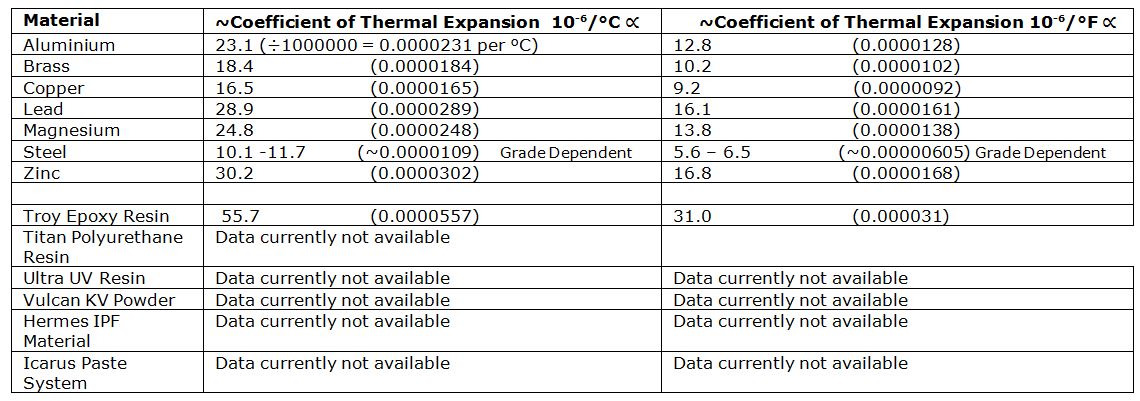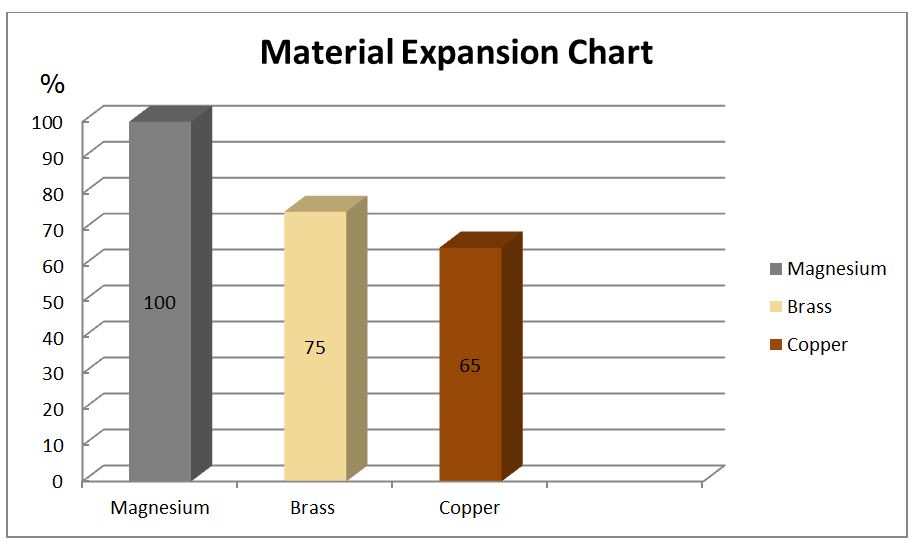The Coefficient of Thermal Expansion, which is typically represented by the symbol , is a measure of the change in length of a material in response to a change in its temperature.
Within small temperature changes, the change in the length of a material is proportional to its change in temperature. Materials will expand as its temperature increase, and contract with decreasing temperatures. Different materials expand by different amounts as shown in the table below.
The table below shows thermal expansion properties of the material that correspond with an approximate temperature of 20°C (68°F). A material’s Thermal Expansion Coefficient is not a fixed constant and increases (slightly) with higher temperatures.
The information provided below should be considered as an approximate guide to values. The results can vary widely between different material manufactures, production batches, material purity and blend tolerances. Material manufacturing processes such as heat treatment, grinding, stress relieving, coat drying etc. all effect the characterises of the material.
Example of material expansion:
For accurate foil printing and foil embossing, copper is the best material, as it is the hardest, the most durable and with the smallest expansion rate of the 3 most popular die making materials.

